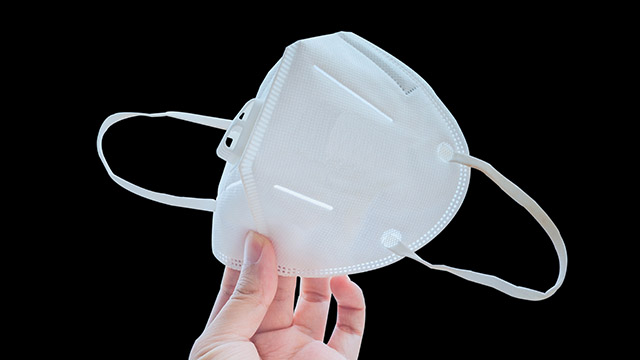Fully vaccinated people now can gather with other vaccinated people without masks, according to the Centers for Disease Control. Terrific news, right? Just rip off your mask and enjoy the air on your exposed face.
Turns out it’s not that easy. Northwestern Medicine experts explain why many of us may feel nervous and reluctant to unmask after an entire year of being cautious and fearful of breathing the air of a fellow human being (except those in our immediate safety bubble).
Dr. Aderonke Pederson, an instructor of psychiatry and behavioral sciences at Northwestern Feinberg School of Medicine, and Jacqueline Gollan, a professor of psychiatry and behavioral sciences at Feinberg, share their insights with Northwestern Now in the Q&A below.
Why does it feel scary to unmask, even after we’ve been vaccinated?
Pederson: “There is sometimes a divide between our logic and our emotions, both have their own validity. Right now, we know that two weeks after we get vaccinated, it is fine to gather with other fully vaccinated people according to the CDC. However, it is expected that many of us may struggle with the transition back to some form of in-person socialization.
“The emotional impact of this past year may linger with us for longer than we might expect. The key is not to feel forced to snap back into a routine overnight. Give yourself time and understand that your emotional journey back to freely socializing in vaccinated cohorts may look very different from those around you.
“It is safe to say that we, as a community, have experienced some grief and trauma over the past year. We all have our unique ways of processing each trauma or grief experience. For some people, there is ongoing grief for lost loved ones, missed funerals, missed goodbyes and for others the economic impact has meant changes in lifestyle. And for the Black community, these challenges have been compounded by the disproportionate impact of COVID 19 mortality and morbidity on Black people and ongoing racism that remains pervasive.”
Gollan: “It is normal to have anxiety about resuming social activities while following the CDC guidelines. Many of us learned to reduce our risk of getting the virus by avoiding others. We viewed social activities as an unsafe experience. We learned being around others was potentially catastrophic, so we perceived these scenarios with apprehension and vigilance.
“With these chronic feelings of insecurity, some of us can become pessimistic and worried about resuming social experiences. In addition, we have learned masks, hygiene and social distancing decrease risk of contracting the virus. Thus, these strategies offered reassurance and control and our wellbeing improved. It’s hard to let that go.”
How can we normalize a new routine?
Pederson: “Before each step forward, reflect on how you want to proceed with your plans to engage with your extended family or community. Follow the CDC guidelines and talk to your doctor, follow the science in your decision making. If you're feeling overwhelmed by the idea of gathering in small groups indoors with fully vaccinated people, it is OK to pass on the gathering and allow yourself time in doses to engage with others. Consider one-on-one gatherings instead of a bigger group.”
Gollan: “Modifying safety behaviors may feel risky — and it’s best to take your time to see what you are comfortable with. We each have our own process and timeline for taking the first steps to normalize our activities. Nevertheless, taking small steps, such as limiting time with others, staying outdoors, socializing with masks, even when vaccinated, can increase one's confidence to assume their 'normal' routine. Test your thoughts — try to gather evidence that supports your predictions. The key is to ask yourself, ‘what is different now from before’ to help you normalize your routine.”
How can I overcome my fear?
Pederson: “Exposure therapy is one of the ways we overcome our anxieties and fears. For some people, a measured step-by-step exposure is the best option and for others they might prefer to gather with a group as recommended by the CDC. Trust your instincts, follow the science, allow your logic and emotions to work together as you make plans. Ask yourself, am I ready to gather safely with others? If the answer is no, then ask yourself, ‘what can I do emotionally and practically to get myself more in a position to gather with others.’ The answer may look very different for each of us and that is ok.
“One example of applying exposure therapy methods: If you want to meet with another fully vaccinated person, it would be fine to say, let's wear masks because I am not yet fully emotionally ready to take off my mask. The next time you gather, you may be able to take that next step. This is an example of an exposure therapy method using a step wise approach to help reduce our anxiety.”
How long should the process take?
Pederson: “These next several months will be a time of rediscovery of ourselves as individuals and as a community as we navigate this collective grief and trauma, ultimately be patient with yourself and be patient with others. Individual and community recovery takes time. There is no one rule for our emotional path forward, for some, it may feel like a quick switch back to normalcy, but for most of us, this will be a process and will take some time.
“Once again, we will have to navigate conversations with our families and friends about what socializing looks like in the coming months.
“According to a Pew Research study, up to 30% of Americans do not plan to get vaccinated, this will be an ongoing concern in the coming months as individual families manage what family engagements will look like. Be patient with yourself, practice self-care, take your time to reflect and remember that one size does not fit all.”

